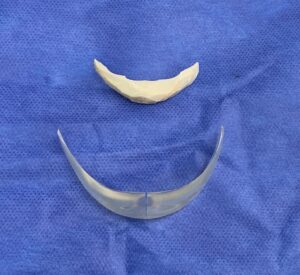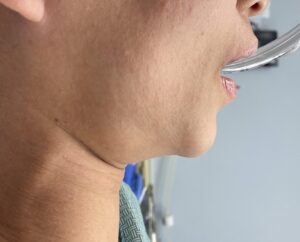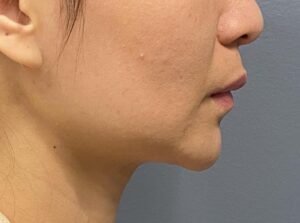Background: Chin implants are the most common surgical facial bone surgical procedure. As a solitary projecting structure with not much complex anatomy to reach it, chin implant surgery is usually viewed as a simple surgery. It often is done as ancillary to other more complex procedures (e.g., rhinoplasty, facelift) which adds to its perception as an easily accomplished facial enhancement.
But despite this perception the aesthetic success of chin implant augmentation is often not so easily obtained. Chin implants actually have a fairly high rate of revision due to either improper implant selection and/or where it is placed on the chin bone. There are a wide variety of chin implant styles and sizes for which there is no exact science as to how to match the implant to the desired aesthetic effect. More significantly preoperative computer imaging is often not done to determine what the patient’s exact aesthetic chin augmentation goals were. Not knowing this information (the target) leaves it to chance that the implant the surgeon selects on what they think looks good will match what the patient thinks looks good.
Placement of a chin implant on the bone can be at any one of its three cephalometric point locations. (Pogonion, gnathion and menton) The menton location on the bottom of the chin is rarely deliberately used unless it is a custom implant design for vertical lengthening. (In some cases the chin implant is unintentionally placed or becomes displaced to the bottom side of the chin through s submenta incisional approach.
Case Study: This female had a prior chin implant for a very short chin. It was not clear as to what the objectives of its placement was but it elongated the chin and still left it lacking ion her desired horizontal projection. It was done through an intraoral approach. Her goals now were to eliminate the vertical lengthening and increase the horizontal projection. She also wanted a wider chin as well. ( a distinct dimensional change that is uncommonly requested in females)
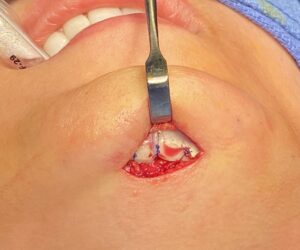
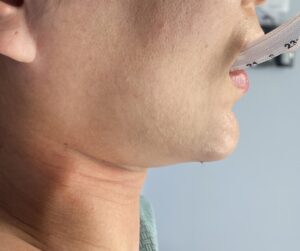
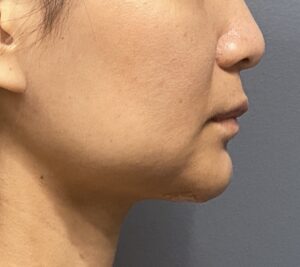
Successful chin augmentation surgery depends on the interaction between implant selection and its placement. But before either of these are determined it first becomes necessary to know what the patient’s goals are through imaging.
Case Highlights:
1) The aesthetic success of standard chin implants is a combination of the size and shape of the implant AND its placement on the bone.
2) A chin implant placed on the lower end of the chin bone elongates the chin and does so at the expense of horizontal projection.
3) A mandibular glove chin implant placed higher on the bone eliminates undesired vertical elongation, increases horizontal projection and widens the chin.
Dr. Barry Eppley
World-Renowned Plastic Surgeon




